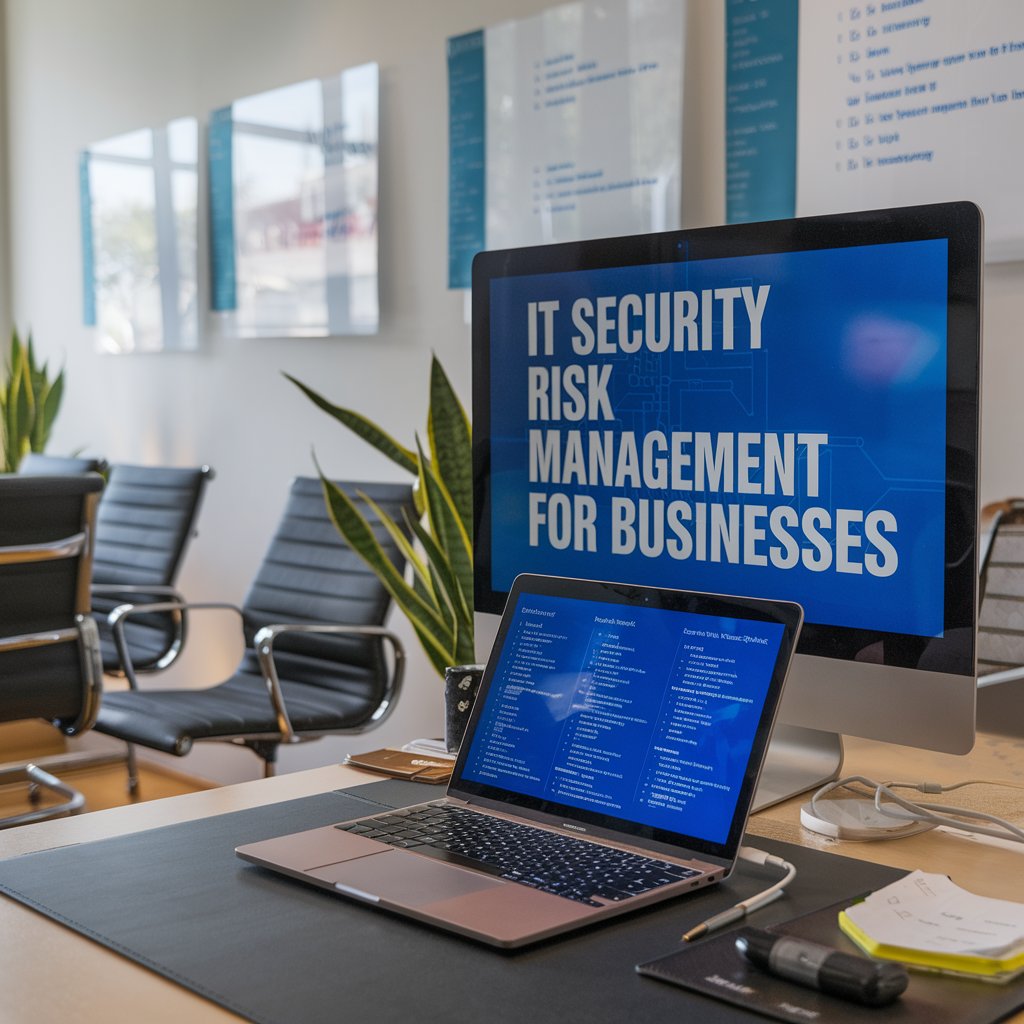UA
6 Min Read
1. Identify IT Security Risks
The first step in IT security risk management is to identify potential risks that could threaten the confidentiality, integrity, and availability of your organization’s data and systems.
Cyber Threats: External threats such as hackers, malware, ransomware, and phishing attacks.
Insider Threats: Risks posed by employees, contractors, or anyone with access to your business’s sensitive data.
Data Breaches: Unauthorized access to or loss of sensitive data, often due to weak security protocols or vulnerabilities.
Natural Disasters: Events like earthquakes, floods, and fires that could physically damage IT infrastructure.
Third-Party Risks: Risks posed by third-party vendors or service providers who have access to your company’s data or systems.
Tools for Identifying Risks:
Risk Assessments: Regularly conduct risk assessments to evaluate your organization’s vulnerabilities.
Threat Intelligence: Use threat intelligence services to stay informed about emerging threats that could affect your industry.
Vulnerability Scanners: Deploy automated tools that can scan for security vulnerabilities in your network, applications, and devices.
2. Assess and Prioritize Risks
Once risks are identified, it’s essential to assess their potential impact on your business operations and prioritize them based on their severity and likelihood.
Likelihood: Assess how probable it is that a risk will occur based on historical data, industry trends, and threat intelligence.
Impact: Evaluate the potential damage if a particular risk occurs. Consider financial loss, damage to reputation, legal implications, and customer trust.
Risk Score: Assign a risk score to each identified threat. This can help prioritize the risks that need immediate attention.
Risk Assessment Frameworks:
Qualitative Risk Analysis: This method involves subjective assessments, typically categorized as high, medium, or low risk.
Quantitative Risk Analysis: This approach uses numerical data and statistical models to evaluate the likelihood and financial impact of risks.
Risk Matrix: A tool that helps visualize and prioritize risks based on their likelihood and impact, allowing businesses to focus on the most critical threats first.
3. Mitigate and Control Risks
After identifying and assessing risks, the next step is to implement measures to reduce or eliminate them. This involves adopting a mix of preventive, detective, and corrective controls.
Preventive Controls
Firewalls: Install firewalls to block unauthorized access to internal systems and networks.
Encryption: Encrypt sensitive data to protect it from unauthorized access during transmission and storage.
Access Control: Implement role-based access control (RBAC) and least-privilege access principles to ensure users have the minimum necessary permissions.
Anti-Malware Software: Use up-to-date antivirus and anti-malware tools to detect and prevent malicious software from infecting systems.
Secure Coding Practices: Incorporate secure coding techniques into the software development lifecycle (SDLC) to prevent vulnerabilities like SQL injection and cross-site scripting.
Detective Controls
Intrusion Detection Systems (IDS): Use IDS to detect suspicious network activity and identify potential security breaches.
Logging and Monitoring: Implement comprehensive logging systems and continuous monitoring to detect unusual activity in real-time.
Vulnerability Scanning: Regularly scan your systems for known vulnerabilities using automated tools and manual penetration testing.
Corrective Controls
Incident Response Plan: Develop a robust incident response plan to quickly address and recover from a security breach.
Backup and Disaster Recovery: Maintain regular backups of critical data and ensure your business has a disaster recovery plan in place to minimize downtime after a cyber attack.
Security Patching: Regularly patch software and systems to fix known vulnerabilities that could be exploited by attackers.
4. Continuous Monitoring and Improvement
IT security risk management is an ongoing process. Continuous monitoring is essential to ensure your security audit3aa
Join our newsletter list
Sign up to get the most recent blog articles in your email every week.
You can copy our materials only after making sure that your services are safe.
This site is protected by reCAPTCHA and the Google Privacy Policy and Terms of Service apply.










